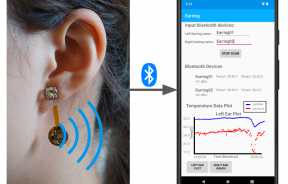Mystery Illness Kills 50 In Congo: Officials Raise Alarm As Fatalities Occur Within Hours After Symptoms Appear

A mysterious illness sweeping through the Democratic Republic of Congo has infected at least 419 people and claimed 50 lives since the start of the year, officials report. The disease, believed to have entered a second outbreak in February, is raising alarm among health officials as most victims have died within 48 hours of developing symptoms.
The first outbreak of the unknown disease was reported in January after three children died within two days of developing hemorrhagic fever symptoms linked to eating a bat.
The high fatality rate of the illness, as well as victims succumbing within just hours or days of developing symptoms, has further heightened alarm among health officials. "That's what's really worrying," said Serge Ngalebato, medical director of Bikoro Hospital, a regional monitoring center, told The Associated Press.
After the second outbreak emerged in Bomate on February 29, health officials are urgently investigating whether the disease may have jumped from animals to humans. Cases of zoonotic spillover are a growing concern in Africa, with reported instances increasing by over 60% in the past decade. If not contained, zoonotic spillover diseases raise the possibility of a global pandemic, especially with the accelerated spread due to faster travel, environmental changes, and increasing human-wildlife contact.
According to WHO estimates about one billion cases of illness and millions of deaths occur globally every year due to zoonoses. Over the past three decades, more than 30 new human pathogens have been detected, with 75% originating in animals.
To identify the source of the current mysterious infection, health officials have sent more than 13 samples to the National Institute for Biomedical Research in Kinshasa, Congo's capital, for extensive testing. So far, all samples have tested negative for Ebola and other deadly hemorrhagic fevers like Marburg. However, some samples have come back positive for malaria.
According to an earlier WHO report, another undiagnosed disease affected 406 people in Congo, including 31 fatalities between October and December 2024. Officials later determined that the infection was likely due to malaria. Patients exhibited symptoms such as fever, headache, cough, runny nose, fatigue, and body aches. The majority of reported cases were among children, particularly those under five years old.



























